Scales
Manually adjust timing, pitch and level » Scales
In Revoice, the user can select a scale to limit the available notes during pitch correction. Revoice can detect this scale itself, but the user can also set a scale manually. Scales also allow for a variety of Pitch Grids outside of the standard 12 Tone system.
To have Revoice detect the scale automatically, select an audio region that has 'Adjust Time / Pitch / Level' applied and press D or right click the audio region and select the 'Detect Scale' menu item from the context menu.
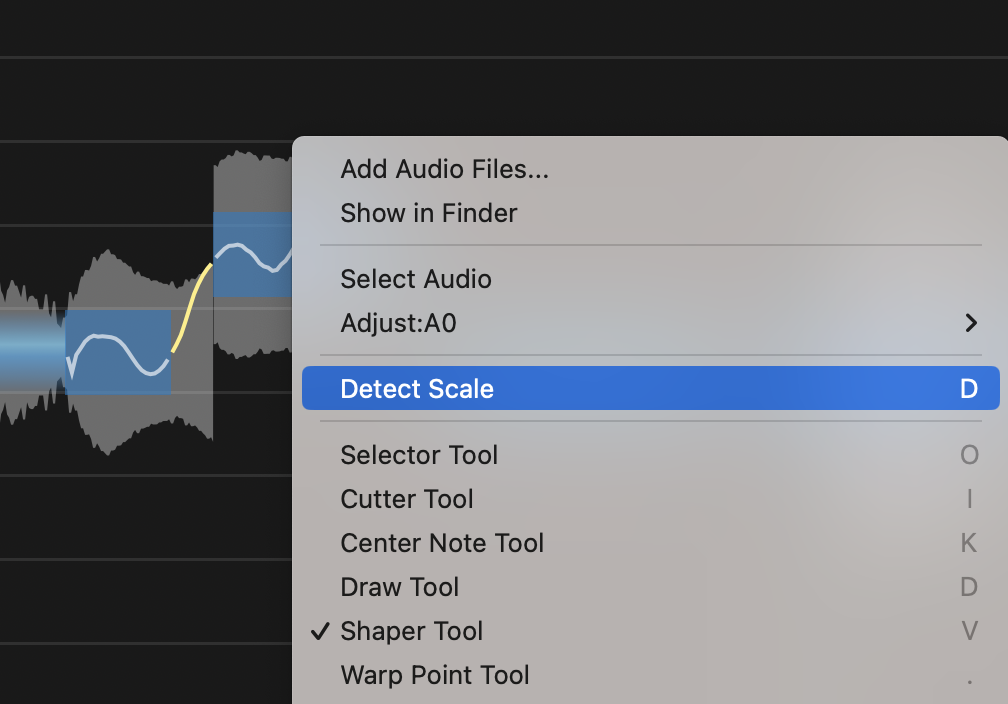
Manually Selecting a Scale
To access the Scales menu, click the dropdown menu in the bottom right hand corner of the Revoice main window.
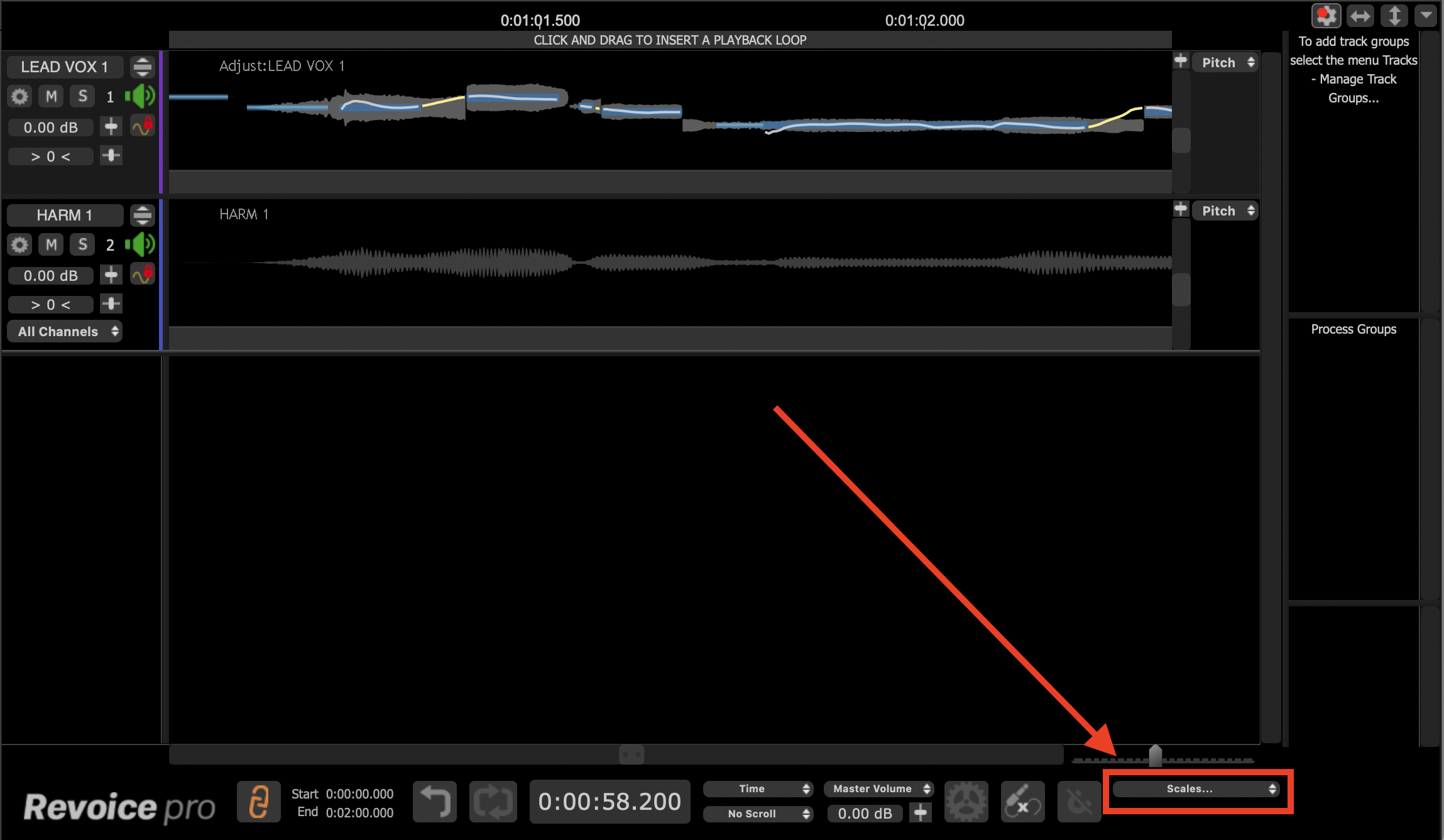
Clicking on this button will reveal a menu containing a few scales, and a 'Scales...' option shown below in blue:
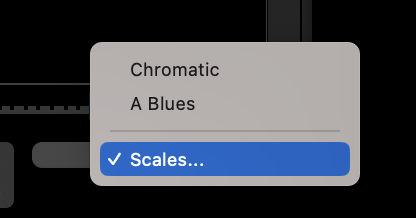
Clicking on 'Scales...' will open the Scales Settings Menu shown below.
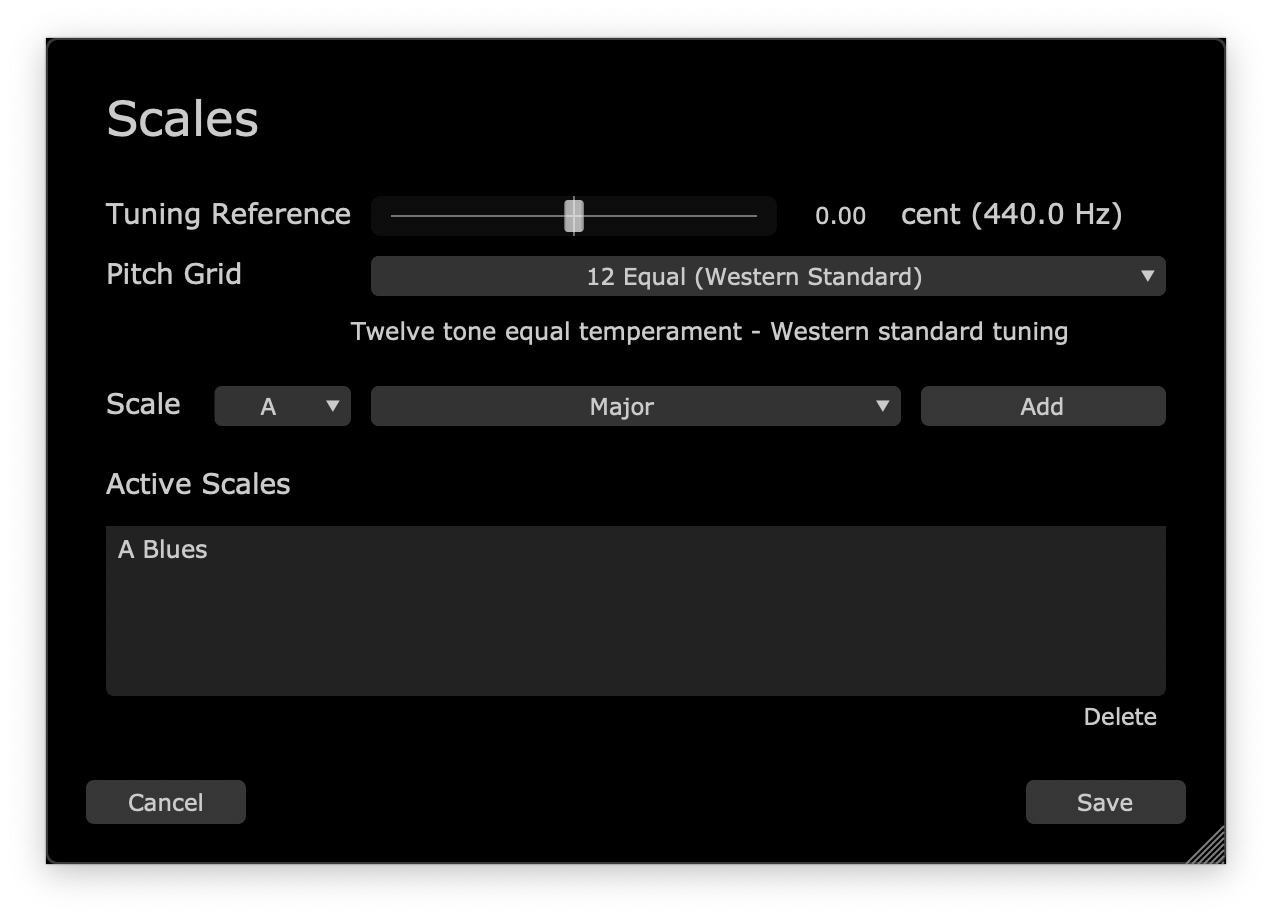
Its main purpose is to let you add and delete scales in the Active Scales list, and also select the scale whose name and notes will be displayed in the Main Window and will provide the note frequencies that automatic tuning (snapping) will use as targets for the detected notes to be moved towards.
You will also be able to choose the Chromatic scale or a detected ("Measured") scale after audio is captured.
The Tuning Reference will default to the standard A4 = 440hz but may be adjusted up or down with the slider as needed.
The Pitch Grid drop down will allow you to select a number of systems other than 12 Tone Equal Temperament tuning.
The Active Scales portion of the menu allows the user to add scales to the list of scales that appears in the Scales pop-up menu. We recommend keeping scales you use frequently available in this list.
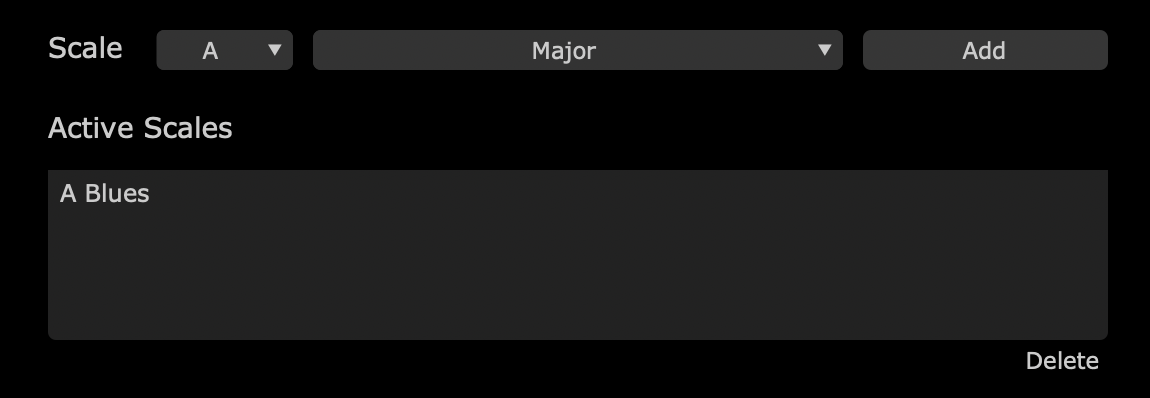
By choosing a key or tonic note and scale type from the drop down menus, and then clicking 'Add', we can add a scale to the list. Below, we've added a D Harmonic Major scale.
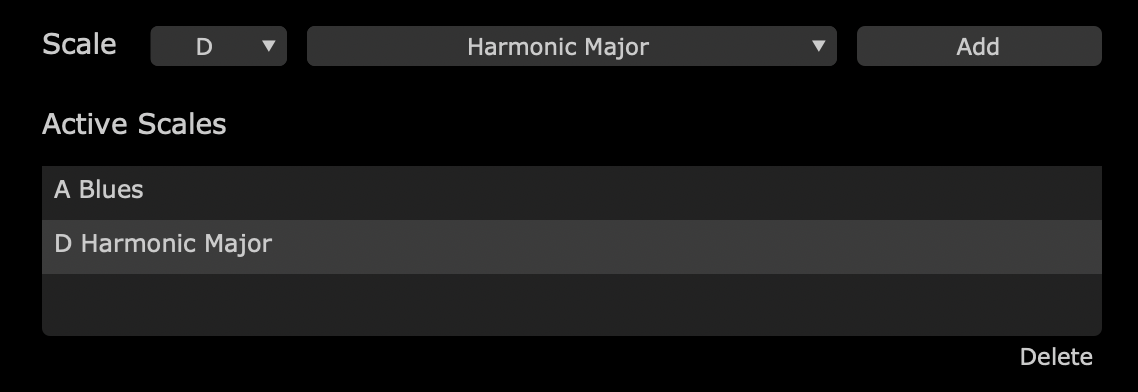
Note: click Save before closing this window, otherwise any changes will not be applied.
Once we have clicked save, we now have D Harmonic Major available in our Scales... pop-up menu in the bottom left of our Revoice window.
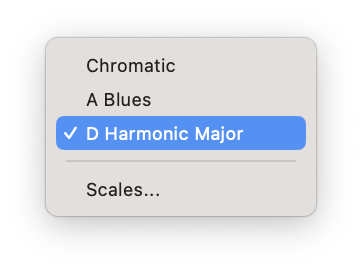
Clicking on "Chromatic" or any other scale name that appears in that menu, will set the Scale in the Scale Display window and show the selected scales' notes in the left border of the RePitch window.
Snapping to a selected Scale
When a Scale has been selected, Revoice can snap it's pitch correction to only notes within the selected scale. To do so, the user must first make sure the Snap toggle is on. The Snap button is located directly left of the Scales... menu.

Any selected Added Scale can be used to have detected notes snapped to its allowable scale note centers.
When the Snap switch is ON: There are four commands or controls that will snap or move note blocks to the nearest Selected Scale note centers
- Double click a single note or one note in a group of selected notes
- Use the Center Notes Tool on one or more selected notes
In (3) and (4) below - you can use the Right Click Menu, which contains these commands: - Select one or more notes and use the Right Click menu to select Pitch Correct Selected Notes to 100%
- Use the Right Click menu to choose Select All Notes and Pitch Correct to 100%
If Snap switch is OFF, all of the above commands will show the scale notes, but since ALL notes are allowable, it will snap to a Chromatic scale.
 |
A Note on the Note Display resembling a Piano Keyboard If you look at the light/dark = allowable vs not allowable notes display (which we and other pitch modifying products have) you need to click the SNAP control ON to see (and use) the Allowable (light) notes. Displays that look like a piano keyboard are only exactly like a piano keyboard if you have a C Major Scale selected in RePitch. In tuning programs, that pattern moves off the C if the tonic changes, but if it is still a major scale, the pattern will look like the piano keyboard, but it obviously starts start on a different tonic. The main point of the Light/Dark pattern is showing allowable notes. So, for non-major scales (even in C) the pattern will no longer look like a piano keyboard. In RePitch, If you have "Chromatic" selected (or the SNAP control OFF), all the notes are allowable, so there will be no dark notes. |
Copyright © 2023 by Synchro Arts Ltd All Rights Reserved.